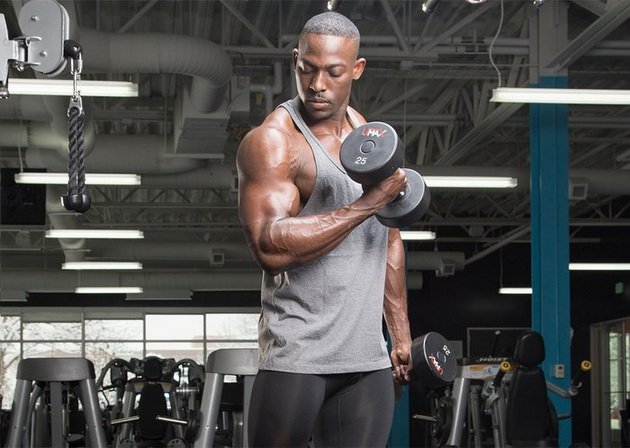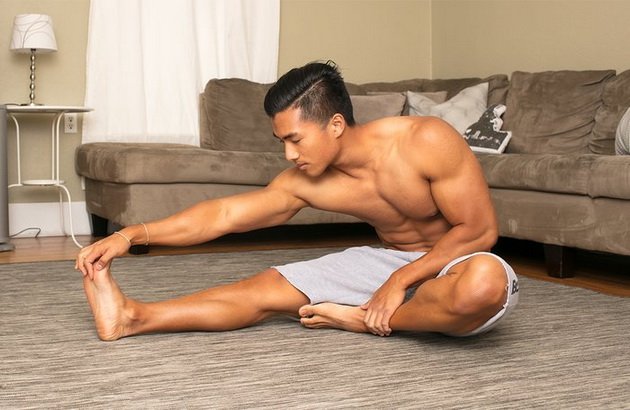Flexibility and freedom of movement exercises are not as effective as basic movements with heavy weights or biceps curls that rip the sleeves of T-shirts, but they are important for successful and safe long-distance workouts. Without full range of motion in ideal (or at least “good enough”) squats or overhead presses, the exercises you do can stretch anatomical structures that they shouldn’t stretch, and this is a direct road to injury, not athletic achievement.
While watching the gymnastics section of the gym, you can’t say that, but training to develop flexibility and mobility in the joints should not take all of your time. And there is no need to complicate them. I have 10 basic rules for developing flexibility. Follow them, and you will have much more freedom of movement in your life!
5 No for Flexibility
1. Don’t take flexibility for granted
Let’s face it, stretching and working on joint mobility is not as enjoyable as keeping an eye on growing weights in squats or bench presses. Flexibility improves more slowly than strength or aerobic endurance, and progress is harder to quantify. But that doesn’t mean stretching isn’t important for athletic performance, quality of life, and injury prevention. An injury can send you off to sick at any time, but by exercising regularly to develop flexibility, you can improve your strength training technique and dramatically reduce your risk of injury.

2. Don’t expect quick results
To be honest with you, improving flexibility is a long process that requires consistency and dedication. Yes, an experienced trainer or physical therapist can “develop” a joint in a couple of minutes, but the immediate effect does not compensate for years of incorrect movement. Sorry! You won’t get results as quickly as you would like, but don’t feel like your flexibility training “isn’t working.” Unless you’re recovering from an injury, joint mobility problems won’t go away overnight. There is no easy and shortcut way.
Look at how the child squats, and you will understand that we begin life with amazing mobility in the joints, but the years change the alignment not in our favor. Celebrate local wins in every training session. Record minimal changes in body position in deadlifts, squats, or overhead presses. Over the course of weeks or months, you will notice a difference, even if it is small. Be patient and remember that the process is likely to take a lifetime.
3. Don’t mess around with full-range exercises
Your joints are designed for specific movements. For example, the ball-shaped shoulder joint is designed to be used for pressing and pulling in different directions; this is facilitated by the structure of muscles and tendons. When we stop using our full range of motion and stop halfway — in partial biceps curls or quarter squats — the range of motion begins to contract.
Remember the old adage: “use it or lose it.”

4. Don’t over-complicate or lengthen your workouts to develop flexibility
You can choose from a variety of flexibility exercises, but choose quality over quantity. Don’t try to do all of the shoulder or hamstring exercises at once. Choose movements that you enjoy and are easy, and do them regularly – every day, but no more than 10-15 minutes. If it is longer, the chances are that you will reschedule your workout the next day. Short and simple sessions are the best recipe for success.
5. Don’t limit yourself to one technique
It may seem that this rule contradicts the advice to simplify everything, but do not jump to conclusions. Focus on key exercises as you work out, but after a few weeks try something new and add variety. There are many ways to improve joint mobility and stretch muscles.
You can easily stretch your chest and front deltas by squeezing your arms behind your back (you can use elastic bands or straps), or by bringing your shoulder blades together and leaning forward. When one exercise starts to feel too easy and you feel that your flexibility has improved, try something new. Look for different options for movement and do not stay in one position for a long time.
5 Yes for Flexibility
1. Assess your flexibility
Assessing your flexibility is the first step to improving your freedom of movement. Training should begin with a clear understanding of which motor stereotypes are violated. It is difficult to do this on your own, it is better to contact a specialist.
It is not enough to know that you have stiffness in your shoulders or hip joints; you need to find the reason for the limited range of motion and understand how it affects your motor stereotype. What caused the problem – the rotator cuff, hip flexors, or latissimus dorsi? Once you have identified the cause, in one-on-one consultation with a professional, with or without assistance, you can make more accurate decisions to improve your mobility.

2. Consistency is more important than long workouts
The best approach to developing flexibility is daily training. You don’t have to do more than 20 minutes, you don’t have to do a dozen exercises from a long list. It is more efficient to spend 5-10 minutes each day working on the shoulder joints while hanging on a bar than doing the same for 30 minutes twice a week.
Why? When movement patterns are disrupted due to injury, overuse, or lack of functional movement / stretching, our bodies adapt to the change. They are trying to find the best way to work within a limited range, so stretch every day. This way we can re-train our body to move more efficiently and with full amplitude.
3. Use simplified versions of the exercises that you can do correctly
As a yoga instructor, I use stretching to improve my flexibility. When done correctly, it helps to increase joint mobility. To get the most out of your workout, you should be doing functional exercises at full amplitude.
If you want to progress in squats, you need to retrain your body to squat more efficiently without load – you don’t need to squat with a weight that is twice your own weight and hope for the best. Stand about 30 cm from the wall, extend your arms over your head, cross your thumbs. Keeping your torso upright, slowly squat down and back (the slower the better). If you can keep your arms straight without touching the wall, move a little closer and sit down again. Squat slowly and keep an eye on your body position.
4. Do yoga once a week
Before you cross out this “rule” as obvious advice from a yoga instructor, listen to my arguments. One of the fundamental principles of any yoga practice is the correct position of the body. Your movements should be fluid. They should create stability in the joints and give a clear understanding of how your body is located in space at any given time. Understanding how your body moves and how you feel about it is critical to developing flexibility. Yoga is a great addition to active recovery or rest days.
You don’t have to practice every day to benefit from yoga. Many people do this, but more often people attend one or two classes a week and still notice improvements in movement quality that are reflected in other activities.
5. Reduce daily stress
The brain is the most complex and powerful organ of our body. He develops hundreds of coping mechanisms for everything from personal relationships to physical stress. Stress can be dealt with in many ways, such as tension in the shoulders and neck or stiffness in the hip and hamstrings. Physical activity can help alleviate some of these symptoms, but there is no substitute for simply reducing the amount of stress in your life.
An easy way to reduce stress is to shut off for a while and remain quiet every day. Turn off the TV before going to bed, sit in silence for 5-10 minutes in the morning, or go for a walk. Things that allow your brain to relax and enjoy peace will help your body release the build-up of stress.

